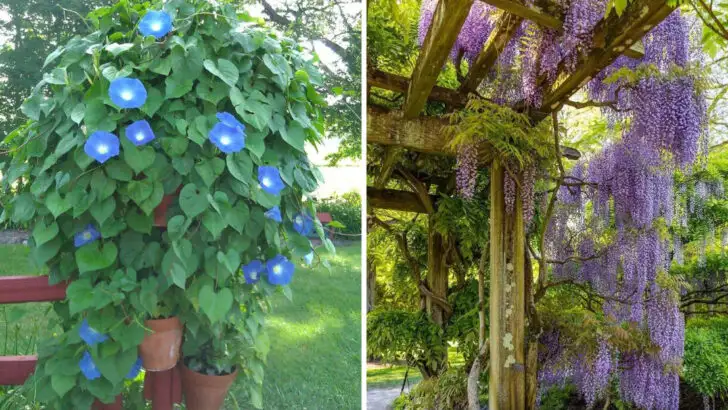There’s something special about a plant that knows how to climb. It’s like watching nature decorate, creeping up fences, wrapping around arches, softening brick walls with blooms and greenery. These flowers don’t just grow; they reach, stretch, and turn bare spaces into something full of life.
If you’ve got a spot that feels a little too plain or a structure that could use some softening, climbing flowers are a beautiful fix. Some grow fast and wild, others are slower and more delicate—but all of them bring a sense of movement and charm. Here are 15 climbing flowers that make vertical spaces feel anything but boring.
Clematis
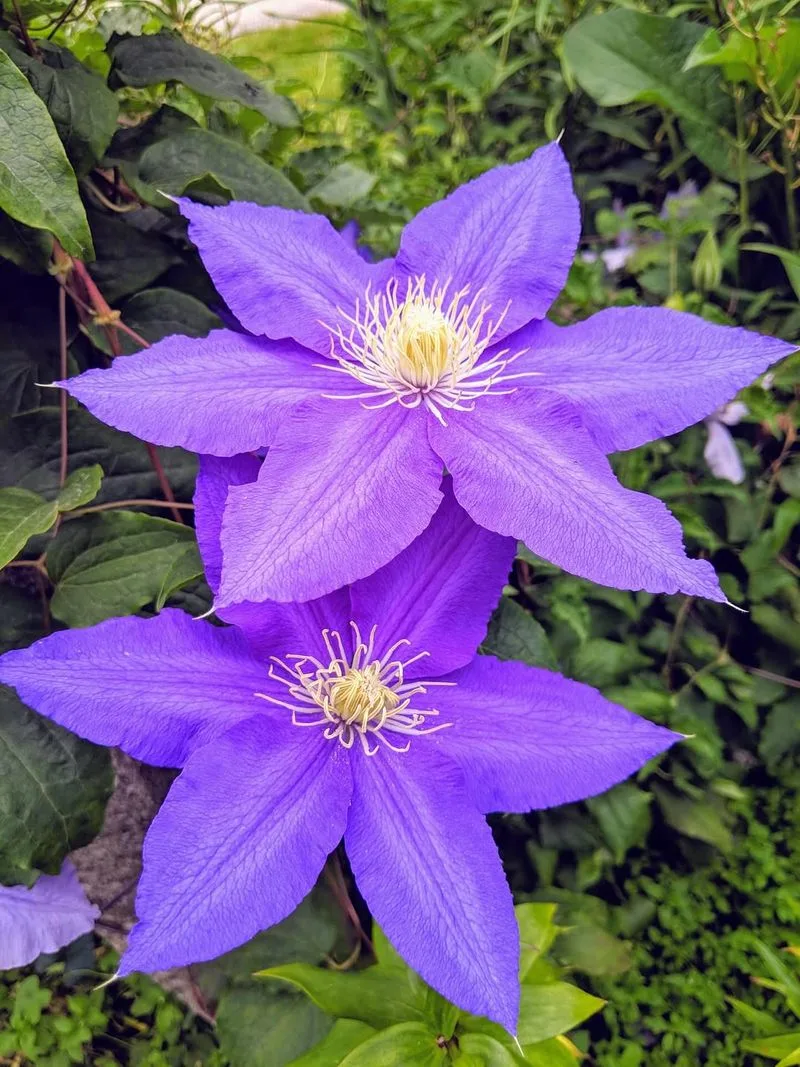
Clematis is the quintessential climbing flower that fills gardens with brilliance. Its large, vibrant blooms come in an array of colors, from deep purple to soft pinks. This floral artist doesn’t shy away from the sun, reaching towards the sky with determination. Gardeners often say, “A fence without clematis is just a fence.”
Not only does clematis bring color, but it also adds texture and intrigue. Its twisting vines weave through structures, creating a tapestry of beauty.
Fun fact: Clematis is sometimes called the “queen of climbers” for its majestic appearance.
Wisteria
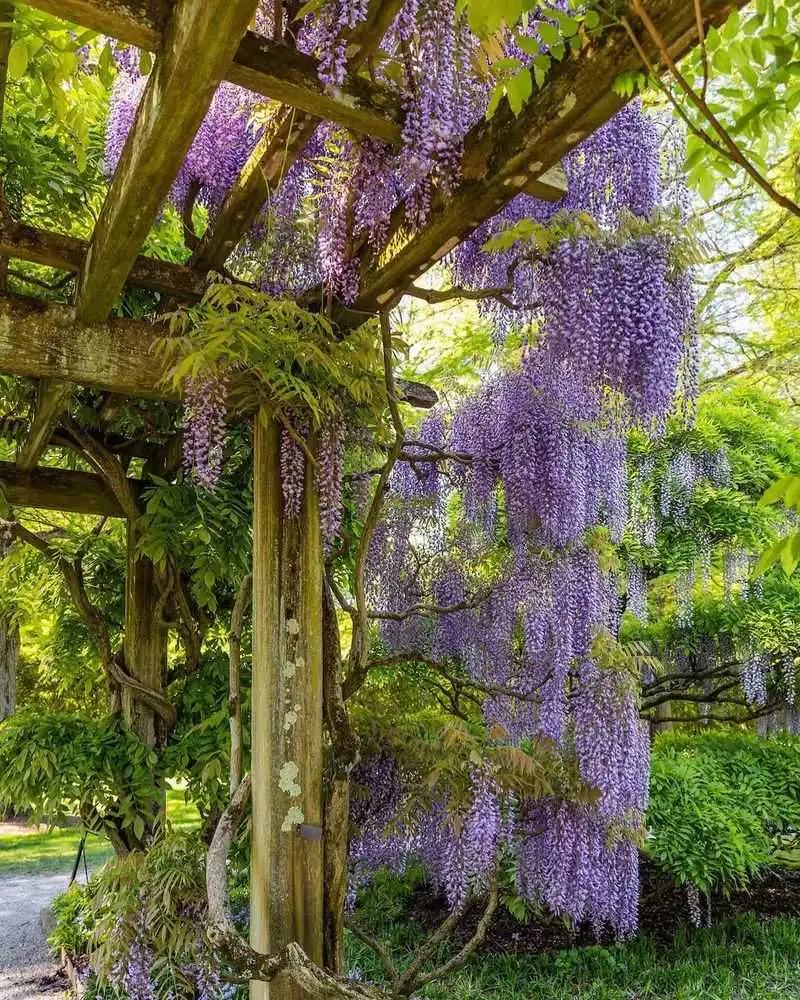
Wisteria captivates with its romantic, cascading blooms. It drapes gracefully over arches and pergolas, its lavender or white flowers exuding an enchanting fragrance. This climbing flower is a favorite for creating whimsical garden scenes.
Wisteria’s abundance of blooms presents a spectacle, transforming spaces into fairytale settings. Its robustness allows it to thrive once established.
Did you know? Wisteria can live for over a century, often outliving the gardens they adorn. Their longevity makes them a beloved choice among gardeners looking to create lasting impressions.
Roses
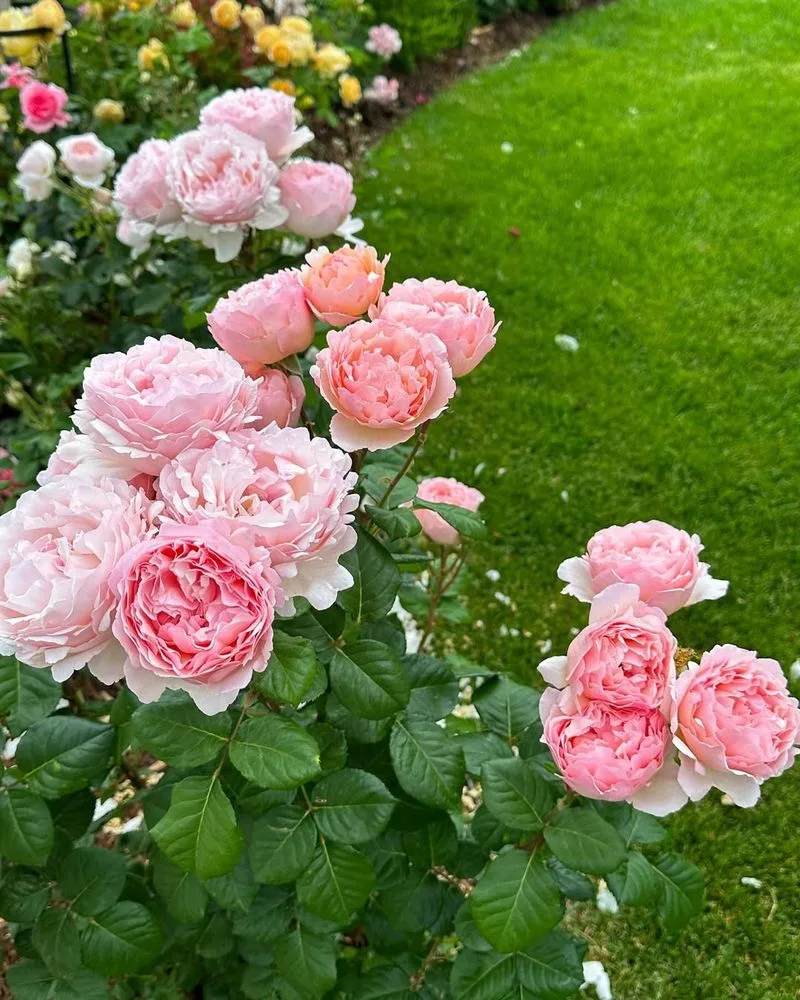
Roses bring timeless beauty and fragrance to vertical spaces. These climbers are perfect for adorning walls and trellises, their blooms offering a classic touch. Red roses symbolize love, making them ideal for romantic garden settings.
Their thorny stems add a layer of protection while supporting their delicate flowers. Climbing roses can transform a garden corner into a picturesque retreat.
Interesting tidbit: Some climbing roses are known to reach impressive heights, with certain varieties growing up to 20 feet tall. They’re truly the giants of the rose world.
Honeysuckle
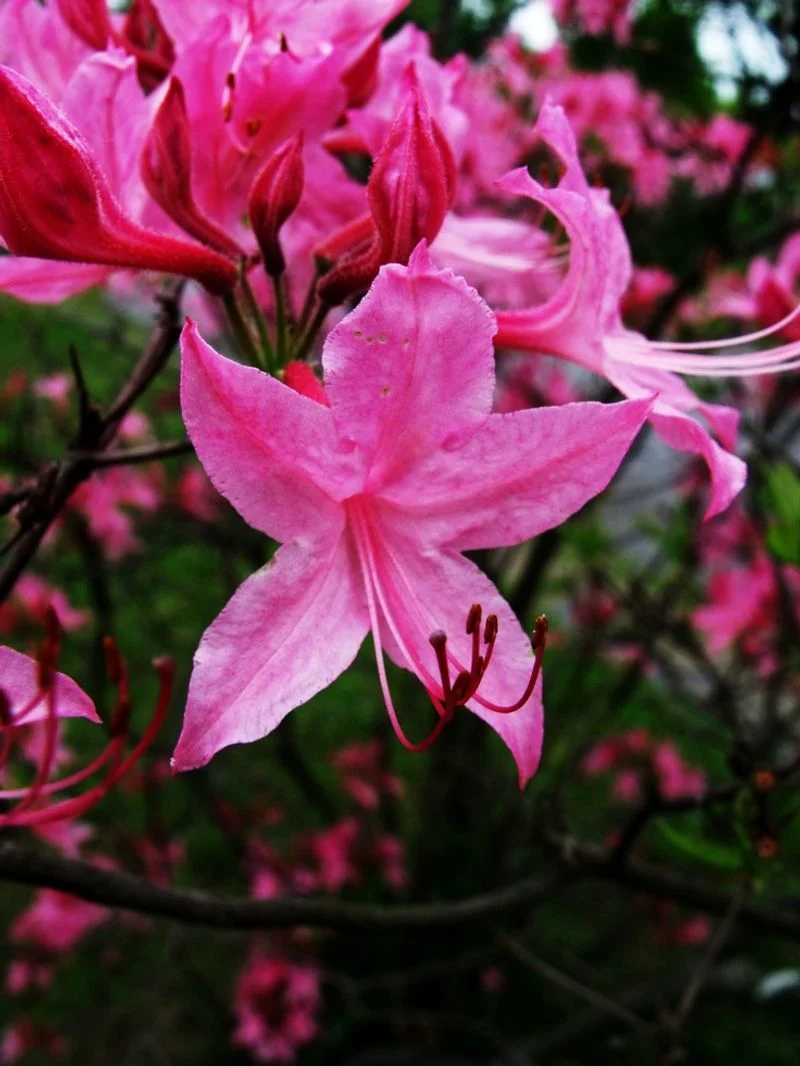
Honeysuckle is adored for its sweet fragrance and tubular flowers that beckon to hummingbirds. The vine’s enchanting scent fills the air as it winds across fences and arbors.
Its flowers range from creamy whites to vibrant oranges, offering a splash of color. Honeysuckle is easygoing and resilient, thriving in various conditions.
Historical note: Honeysuckle has been used in traditional medicine for its supposed healing properties. Its presence in gardens has symbolized happiness and love for centuries.
Passionflower
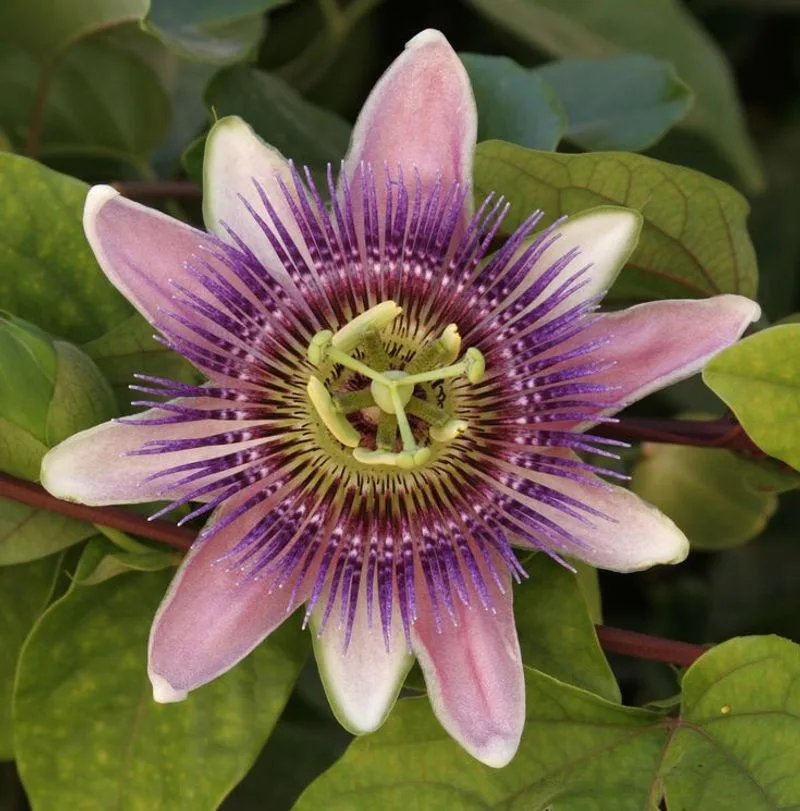
Passionflower leaves onlookers in awe with its intricate and striking blooms. Each flower is a masterpiece, featuring a dazzling array of colors and patterns. This climber is a conversation starter, often admired for its unusual structure.
Passionflower thrives in sunny spots, making it a tropical delight. Its unique appearance is matched by its ability to attract pollinators.
Fun fact: Passionflower is not only beautiful but also serves as a host plant for caterpillars of certain butterfly species, contributing to biodiversity.
Trumpet Vine
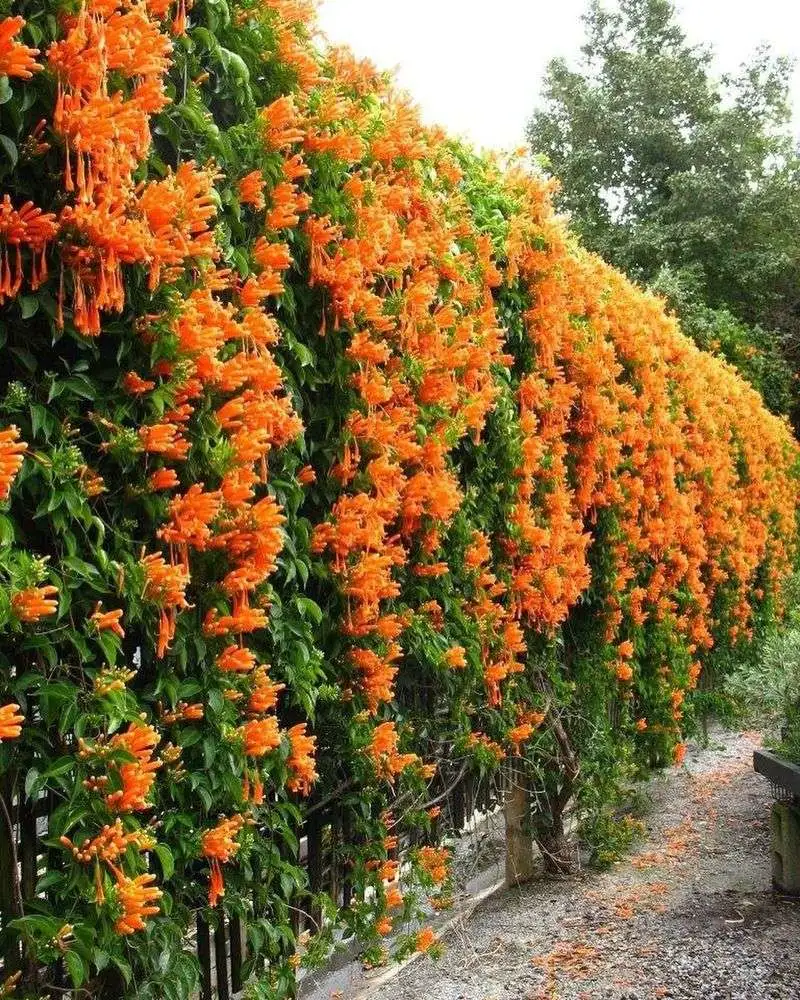
Trumpet vine is a bold and vigorous climber, known for its vibrant orange, trumpet-shaped flowers. These blooms are a magnet for hummingbirds and bees, adding lively activity to gardens.
This hardy vine prefers sunny spots and can quickly cover unsightly structures. Its dense foliage creates lush backdrops for its spectacular flowers.
Did you know? Trumpet vine is sometimes referred to as “cow-itch vine” because contact with the leaves can cause skin irritation in some people. However, its beauty often outweighs this minor drawback.
Morning Glory
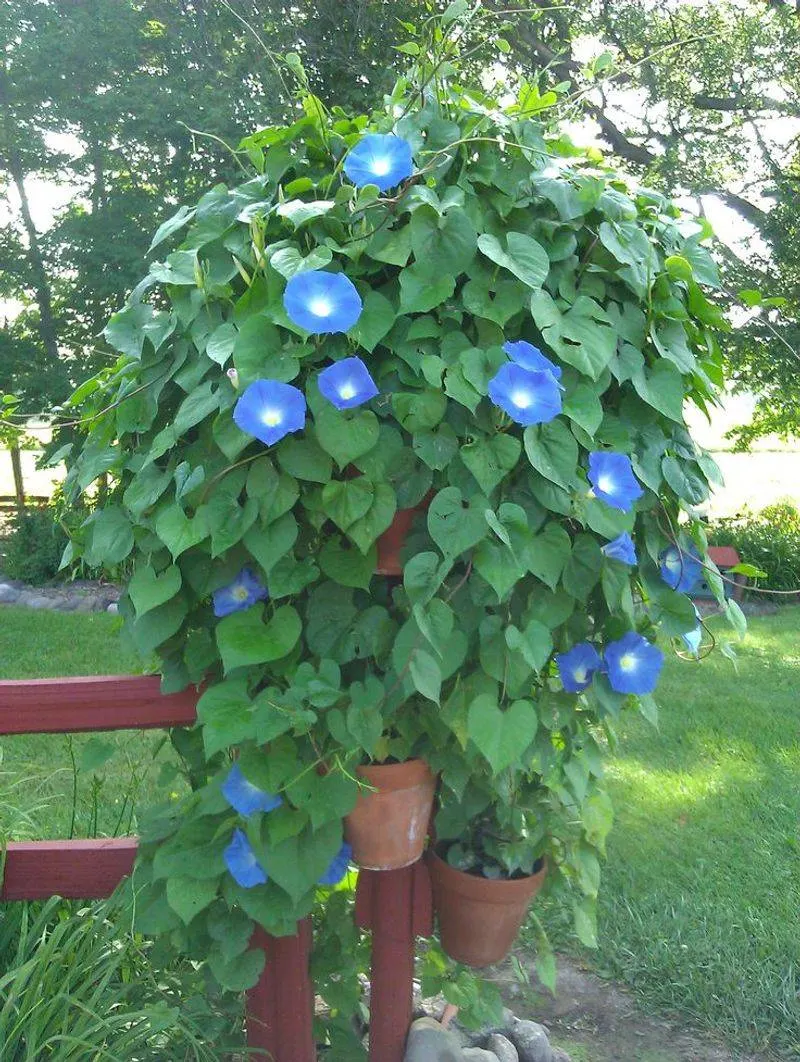
Morning glory greets each day with fresh blooms, its trumpet-shaped flowers opening in the first light. The vibrant blues, purples, and pinks of its petals are a cheerful addition to any garden.
This vine is fast-growing, covering spaces rapidly with its heart-shaped leaves. Morning glory thrives in sunlight, making it ideal for sunny fences and trellises.
Interesting fact: Morning glory seeds have been used historically in rituals for their supposed psychoactive properties. Today, they are cherished purely for their beauty and ease of growth.
Bougainvillea
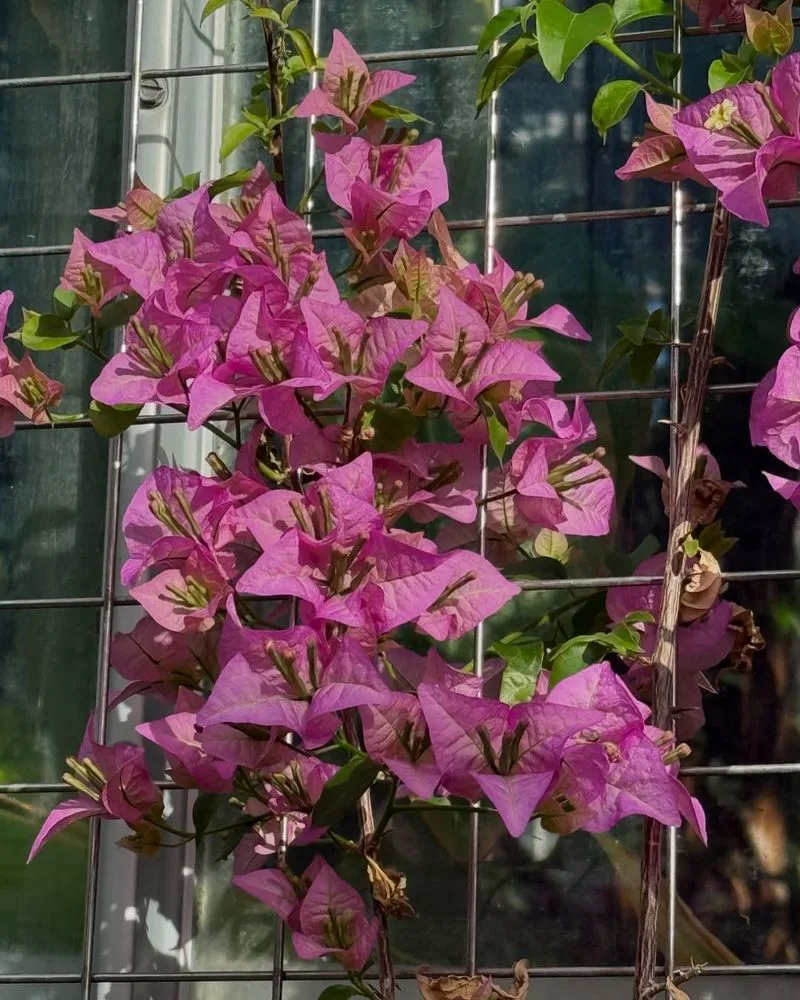
Bougainvillea is renowned for its vibrant bracts that resemble paper flowers. These colorful displays cover walls and fences, transforming spaces into tropical paradises.
This vigorous climber enjoys warm climates and can tolerate drought, making it suitable for less humid regions. Its thorny branches provide a natural deterrent for unwanted guests.
Did you know? Bougainvillea is named after French explorer Louis Antoine de Bougainville, who discovered the plant in Brazil during a voyage in the 18th century.
Sweet Pea
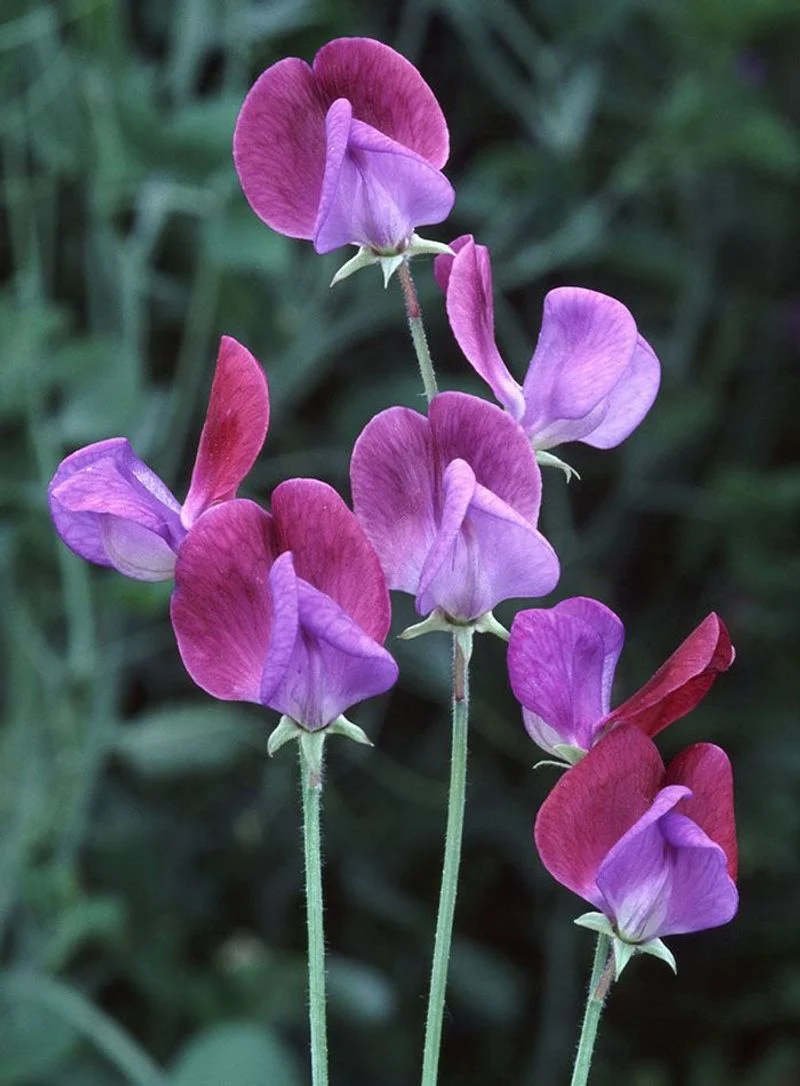
Sweet pea offers delicate beauty and fragrance, making it a charming addition to gardens. The pastel-colored blooms climb gracefully, providing a soft touch to arbors and borders.
These flowers are beloved for their scent, reminiscent of warm, sunny days. Sweet peas thrive in cooler climates, bringing bursts of color to early spring gardens.
Fun tidbit: Sweet peas were first cultivated in the 17th century in Sicily. Today, they symbolize blissful pleasure and are often used in bouquets and floral arrangements.
Ivy Geranium
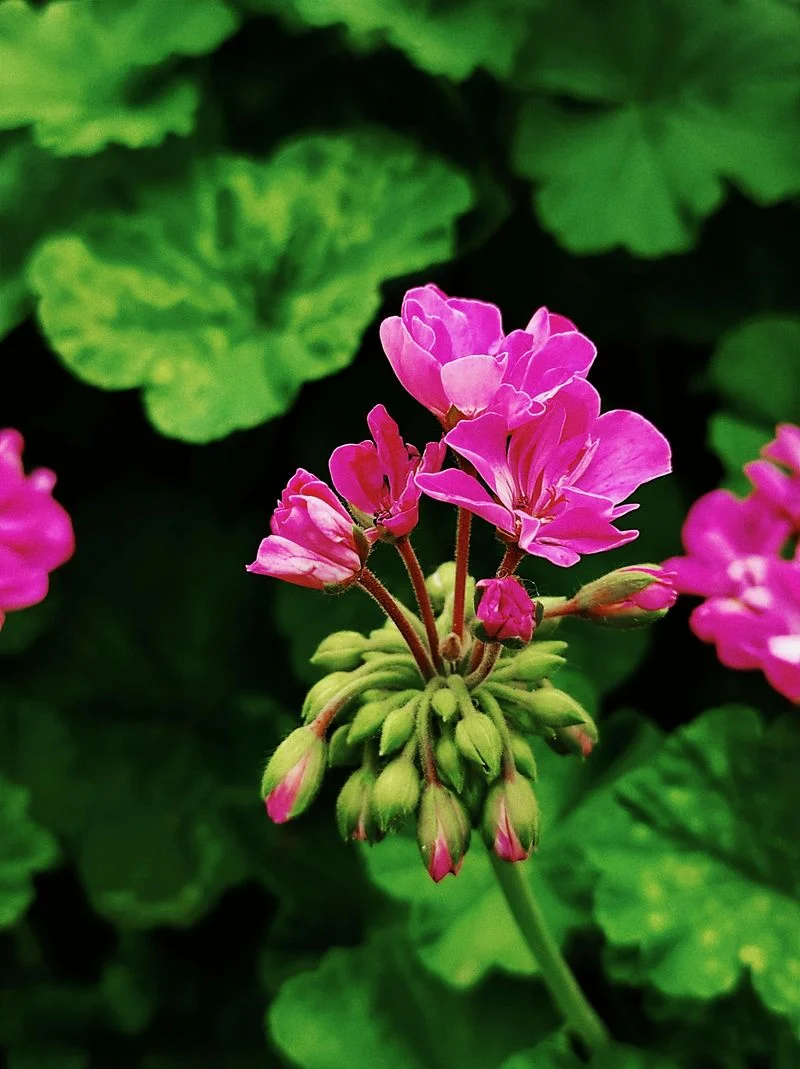
Ivy geraniums bring a touch of elegance with their cascading blooms. These flowers thrive in containers and hanging baskets, adding charm to balconies and patios.
The bright pinks and reds of their flowers contrast delightfully with lush green foliage. Ivy geraniums are versatile, flourishing in both sun and partial shade.
Interesting fact: Ivy geraniums are often used in urban gardening for their ability to thrive in compact spaces. Their resilience and beauty make them a popular choice for city dwellers.
Jasmine
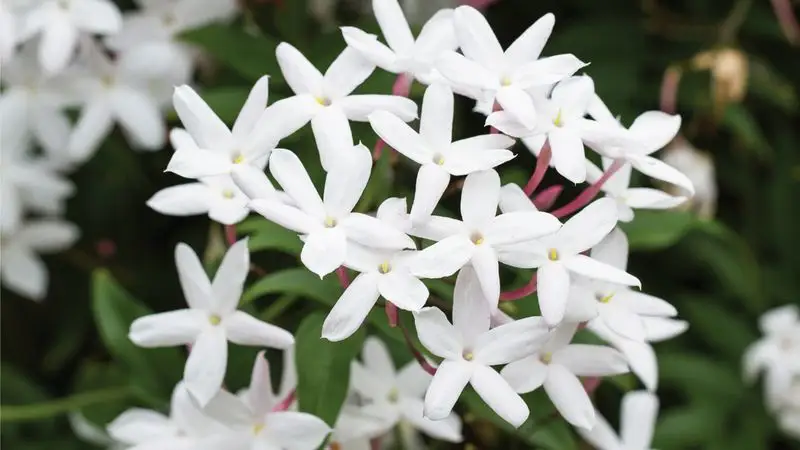
Jasmine enchants with its sweet, intoxicating fragrance. Its star-shaped flowers are a sight to behold, climbing elegantly over pergolas and trellises.
This climber’s scent is strongest in the evening, creating a serene garden atmosphere. Jasmine is cherished for its beauty and calming presence.
Fun fact: Jasmine is often used in perfumes and teas, valued for its soothing aroma. Its flowers have also been used in traditional medicine for their reputed benefits.
Virginia Creeper
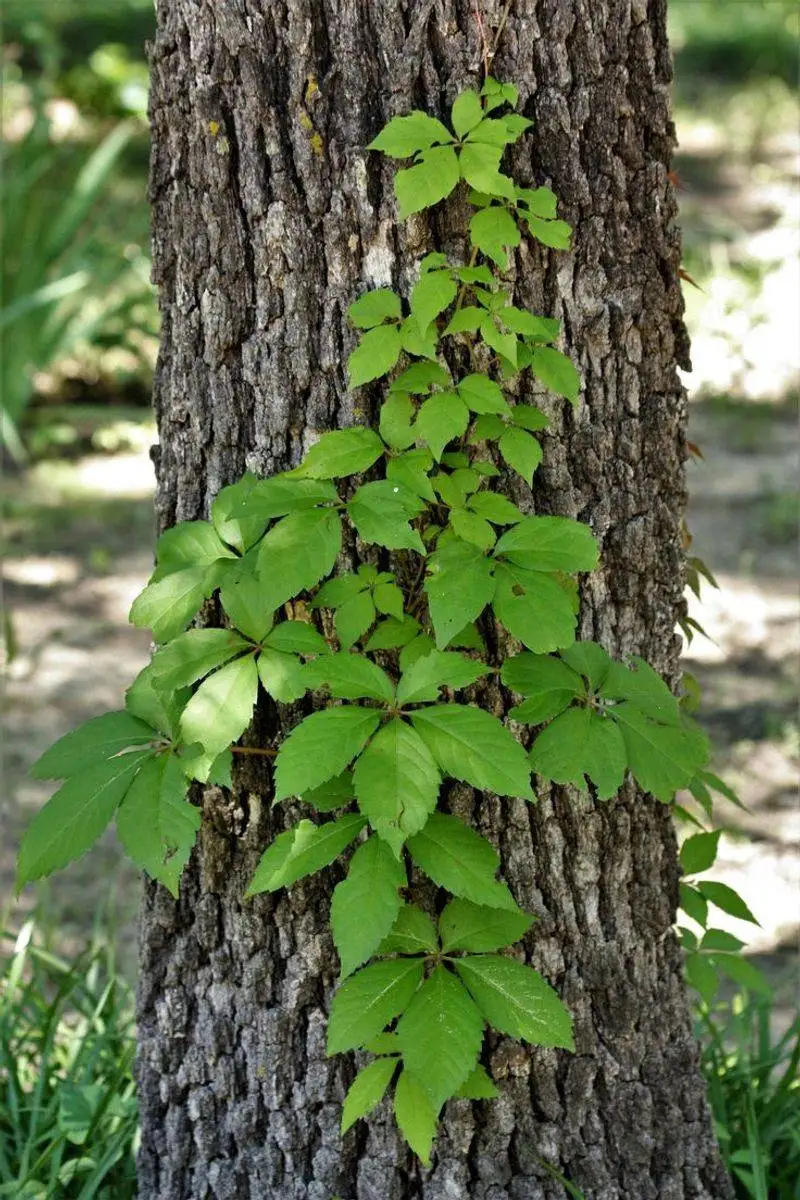
Virginia creeper offers a spectacular show as it transitions through the seasons. In autumn, its leaves turn a brilliant red, providing a fiery display that captivates onlookers.
This hardy vine is perfect for covering large areas, attaching itself to surfaces with ease. Its adaptability makes it a popular choice for both novice and experienced gardeners.
Did you know? Despite its beauty, Virginia creeper’s berries are toxic to humans. However, birds find them irresistible, adding a dynamic element to this plant’s ecosystem role.
Chocolate Vine
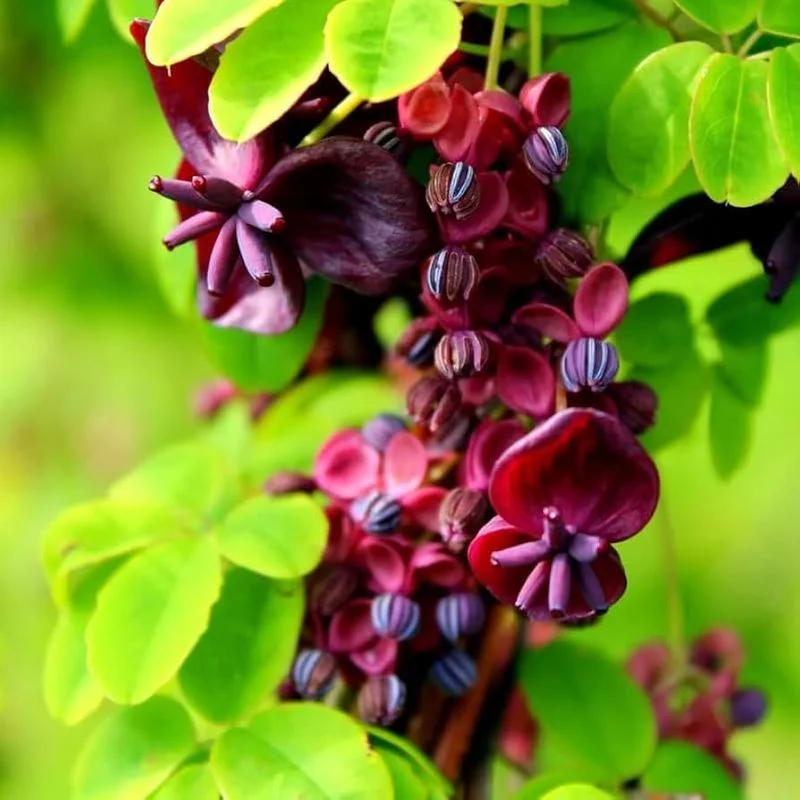
Chocolate vine, with its intriguing name, invites curiosity. Its purple-brown flowers give off a subtle vanilla scent, adding allure to shaded garden spots.
This climber’s lush foliage and unique blossoms create a striking visual contrast. Chocolate vine is resilient, thriving in various conditions.
Interesting tidbit: Also known as “Akebia,” this vine produces edible fruits in some regions. Its versatility and beauty make it a unique addition to any garden.
Star Jasmine
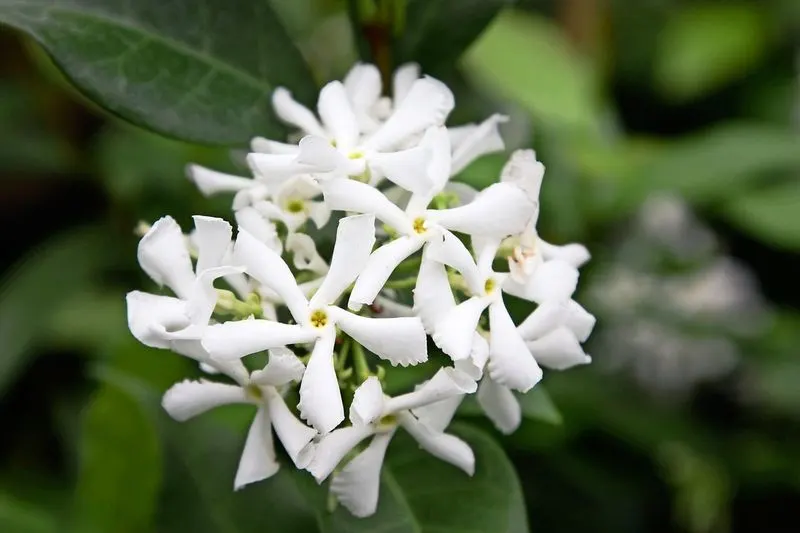
Star jasmine captivates with its trailing vines and sweetly scented white blooms. It’s a favorite for garden entryways, creating inviting, aromatic pathways.
The glossy green leaves complement its star-shaped flowers, adding elegance to landscapes. Star jasmine thrives in warm climates, offering visual and olfactory delight.
Did you know? Star jasmine is not a true jasmine but belongs to the same family, Oleaceae. Its beauty and fragrance make it a beloved choice for gardeners seeking aromatic floral displays.
Climbing Hydrangea
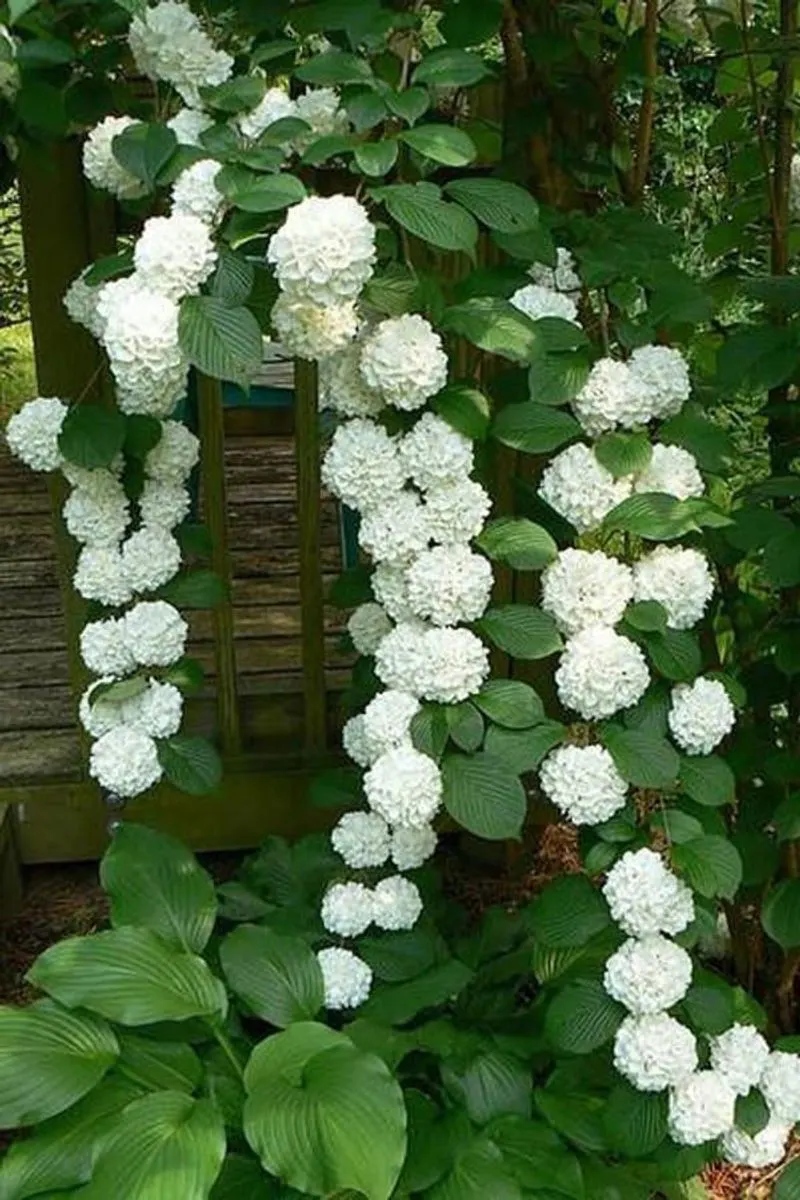
Climbing hydrangea is a unique addition to shady gardens, with its elegant white blossoms creating a serene atmosphere. Its flowers form large clusters, offering a soft, lacy appearance.
This climber is slow to start but rewards patience with its lush growth. It’s often used to cover walls and fences, providing a natural backdrop.
Fun fact: Unlike many climbers, climbing hydrangea doesn’t harm the surfaces it grows on, making it a gentle yet impactful choice for gardeners.

